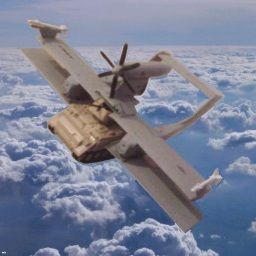False equivalency, the Moskva is a submarine.
I like big ships and I cannot lie
You other sailors can’t deny
That when a ship sails in with an itty bitty wake
And a big hull in your face
You get sprung
Wanna pull up tough
Cause you noticed that ship was stuffed
Deep in the sea she’s fairing
I’m hooked and I can’t stop staringBest thing I read this week.
If you call it a cruiser, there will be a huge debate in the German media about whether Germany is trying to be a superpower again. That’s why everything is a frigate.
let’s call it a cruise frigate.
Ship designations are more based in function, than displacement. Frigates were traditionally designed to operate independently from fleets, where destroyers are generally escorts for fleet vessels, like transports, cruisers and carriers.
Cruisers were traditionally designed with specific missions in mind, air defence cruisers(Ticonderoga), anti-ship cruisers (Slava), etc
But cruisers are going out of fashion, with navy’s opting for more capable Frigates and Destroyers over time, which is why the displacement has been growing.
Even these generalities depend on the navy and on history. Sometimes even in the same navy there are back and forth with namings.
The short answer is always: “it depends” :)
Is the class of ship based off of displacement instead of use/design? That seems like a strange system,
While there were classes that were.relatively clear-cut, most shop classifications are a clusterfuck. Frigates and destroyers are basically the same, unless they aren’t. Same goes for Battlecruiser and Battleship or light cruiser and destroyer and so on.
There is no definition really. Everybody names their ships whatever the fuck they want.
In the beginning of the 20th century and between the two world wars, during the era of the dreadnoughts and battleships, there was an arm race. So the various powers agreed on a number of battleships to limit the arm race. The definition was made with displacement, because at the time battleships were meant to carry the biggest possible guns, so displacement was kind of proportional. To get around this, they designed battlecruisers. Basically a battleship but with a displacement low enough that it was not limited by treaties.
Coming soon in Germany/Japan cooperation - “helicopter frigate”
It is pronounced “Frikadelle”.
Oh! I know lots about these “frikadeller”. Ships in a sea of red, you could say. Or sailing upon the broth of your enemies, maybe?
I don’t get it
Frigates are supposed to be the second smallest blue water (trans continental/open ocean fleet) ships. IDK why, but countries are making them bigger each generation to the point where they’re the size of older generation cruisers, the largest non carrier type combat ships typically deployed
IDK why, but countries are making them bigger each generation
Not my area, but… I’m pretty sure there are rules and regulations on quantities of ships of certain classes in various waters - ie, one country couldn’t suddenly float 500 battleships in the Mediterranean. Frigates are the second smallest ship, so if you can shove tons of strength and firepower into the class of ship with the loosest regulation, then you can essentially get more firepower into the same spaces.
Countries have been fucking with the class designations (which, from my very casual understanding, are totally silly) to circumvent restrictions for many years.
I think I saw a video on this from Battleship New Jersey.
The main time that displacements and ship sizes were actually standardised and restricted was due to the various naval treaties from about 1900 to WW2.
Before and after that (and to some degree during), sizes of each class of ship gradually crept up and up as technology advanced and everyone wanted a frigate/destroyer/cruiser/battleship that was slightly better and thus slightly bigger than what their potential opponents had. Scope creep.
Prior to WW2, this simply meant that the biggest ships kept getting bigger and bigger, and then other classes were 1/2/3 sizes smaller.
Post-WW2, while each class kept getting bigger and more expensive, the advent of air as a serious threat meant that the largest ship class just disappeared - the US hung on to battleships for a while for specific applications, but never built new ones. Too expensive, too many eggs in one basket, and not enough actual need. No-one expects to have another big naval slugfest; radar, aircraft, and missiles have obsoleted large naval guns and armour.
Each successive ‘large gunboat’ class has disappeared somewhat later, as it reaches the point where politicians and admirals decide we can’t risk losing this many people and this much cash in one hit.
Aircraft carriers have stuck around because they’re very useful and they’re not intended to go within range of enemy heavy weapons, but a battleship with 16" guns and armour to suit is very overkill and expensive for anything but fighting another battleship. Shore bombardment is about the only role they could have left, and much smaller ships do that just fine.
Aircraft carriers are staying because they’re force projection plate-forme. Like they’re not meant to fight, rather they are forward bases that you can move on the water. And the navy is meant to protect them.
Removed by mod
but newer cruisers are growing too?
In non UK Europe most combat ships are frigates. We don’t use the destroyer or cruiser categories. This is different in the US and UK navies apparently.
From Wikipedia : only the US and Russian navies have cruisers nowadays.
What’s the displacement supposed to be?
US Garcia frigates (1960s) were 2600 tons; Knox (1970s) 3000; Brooke class FFG/heavy frigates (1960s) were 5400 tons, and Oliver Hazard Perry class FFGs (1980s) 4100 tons.
So they’re doing the same thing that auto manufacturers are doing to pickup trucks.
Removed by mod
Eh, Moskva was stupidly old and pushing near 50 years. In a navy that actually takes care of their ships, thats old. In the Russian navy its in so much disrepair its bordering on ancient.
Naval history, particularly since ironclads and steel armor became a thing, ships of smaller classes eclipse those of larger ones of previous generation. HMS Dreadnought was 18000 tonnes when she was in service in the 1900s, 50 years later, USS Des Moines was an 18000 tonnes Heavy Cruiser, comparable to the infamous battleship.
German Frigates being comparable to Russian Reef starters isn’t that big of a surprise.





